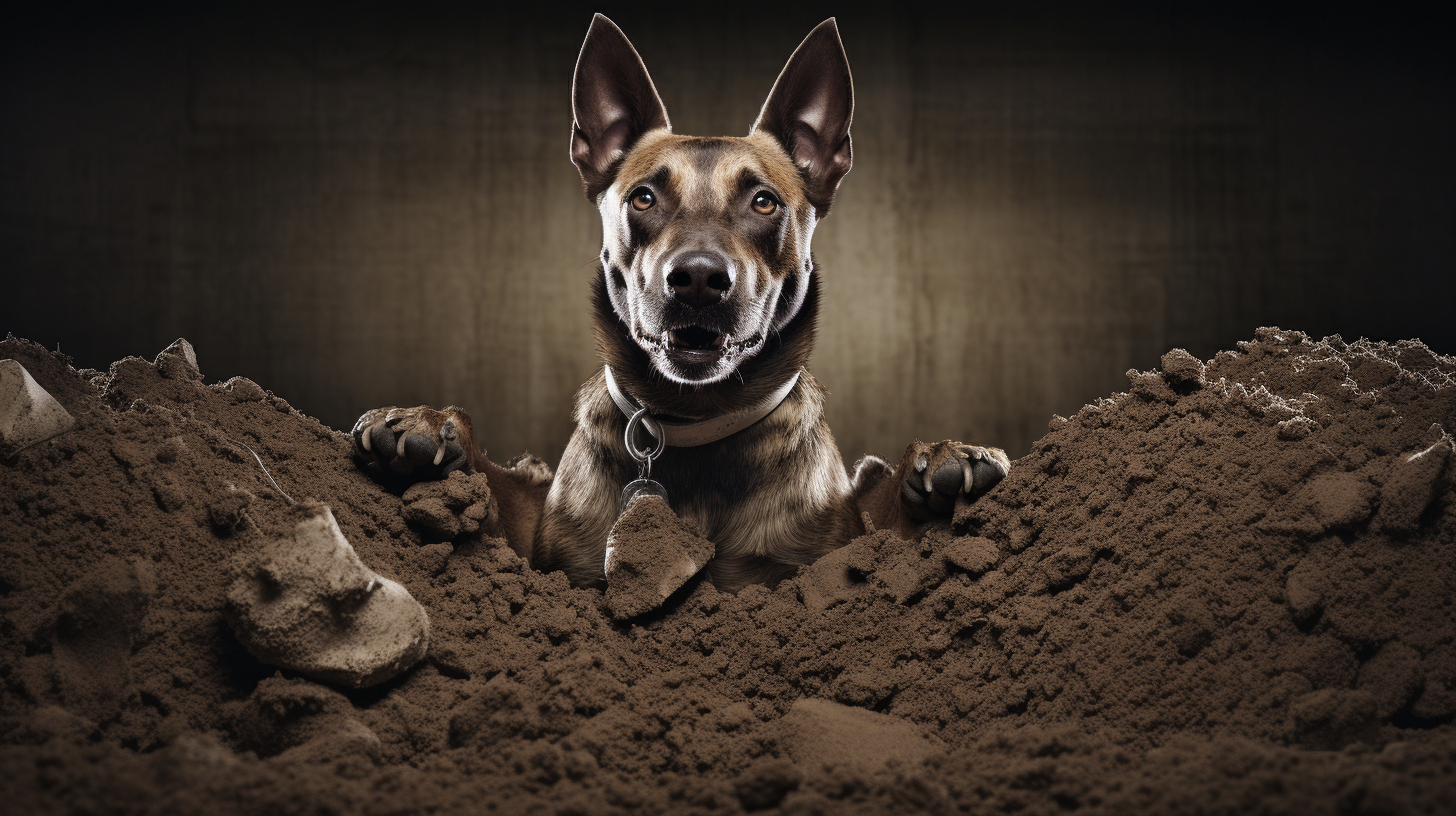The soil of the Canine Republic is rich with stories, myths, and tails of yesteryear. But beneath the layers of hearsay and folklore lies a more tangible history, waiting to be dug up and displayed for all curious pups to see. As the digging continues at the Barkington Plains archaeological site, initiated by the esteemed Dr. Paws McMutt, we’re gaining an unprecedented glimpse into the sophisticated lives of the ancient dog societies that once flourished here.
Let’s pawse and reflect on what has been uncovered thus far. Ancient canine cities, complete with urban design that rivals some of our current parks and recreational areas, have been unearthed. The level of sophistication in these cities suggests a structured society with a rich cultural heritage, not unlike what we know today.
Artifacts tell silent stories of the ancients’ everyday lives—ceramic food bowls with intricate patterns, still sharp grooming tools, and leather collars studded with unidentifiable metals. The find that has caused the most tail-wagging, however, is a set of stone tablets etched with what is presumed to be an early form of Bark-script, the written language allowing communication across the many breeds of the Canine Republic.
Dr. McMutt’s team recently hit upon a mother lode of tail-wagging technology: a device that seems to have been used for massaging those hard-to-reach itchy spots. This discovery has sparked countless theories about the possible technological advancements of our ancestors. Did ancient pups invent gadgets for comfort, or were these devices a necessity for survival? The implications are boundless and breathtaking in their scope.
But perhaps more intriguing is the evidence pointing to ancient spiritual practices—a series of miniature obelisks surrounding a grand podium may have been used for howling rituals or celestial observations, aligning perfectly with the Canine Constellation on the night of the Full Moon Festival. Were these ancestors doggedly devout or simply studious stargazers? The religious or educational interpretation of this site could redefine the spiritual path of the contemporary Canine Republic.
Sport, an integral part of our current society, also seems to have been a passion of the ancients. Explorers have dug up what resembles an early version of a ‘fetch stadium,’ which may serve as concrete evidence that the love for ball games dates back eons. Sports historians are slobbering over the lineage and evolution of modern games like Barkball and Tug-of-War.
These fascinating finds are rekindling an interest in history across the Canine Republic, as pups young and old alike are eager to learn more about their foredogs. Theories about the migration patterns, societal norms, and even fashion trends of the ancient canines are being barked about in cafes and kennels alike.
However, as we unfurl the scrolls of time, the questions multiplying outnumber the answers. What led to the demise of these once-thriving societies? Is there a direct lineage to the canines we know today? And, could these ancient dynasties hold the keys to solving current issues within our Republic?
The story of these ancestral canines is far from being fully exhumed. As Dr. McMutt often states, ‘Every brushstroke against the dirt is like turning a page in our history book.’ The commitment to sniff out the truth is at the heart of the archaeological community, and the anticipation of each new discovery is thrilling.
The digging at Barkington Plains is ongoing, and experts say it’s far from over. The layers of history are dense, and it appears we’ve only scratched the surface. There are still many tales to be told, many bones to be found, and endless secrets to unearth from these ancient roots of ours.
The fascination with our past guarantees the continuation of this grand excavation and ensures that the pulse of ancient dogdom will beat on within the heart of our modern Canine Republic.
